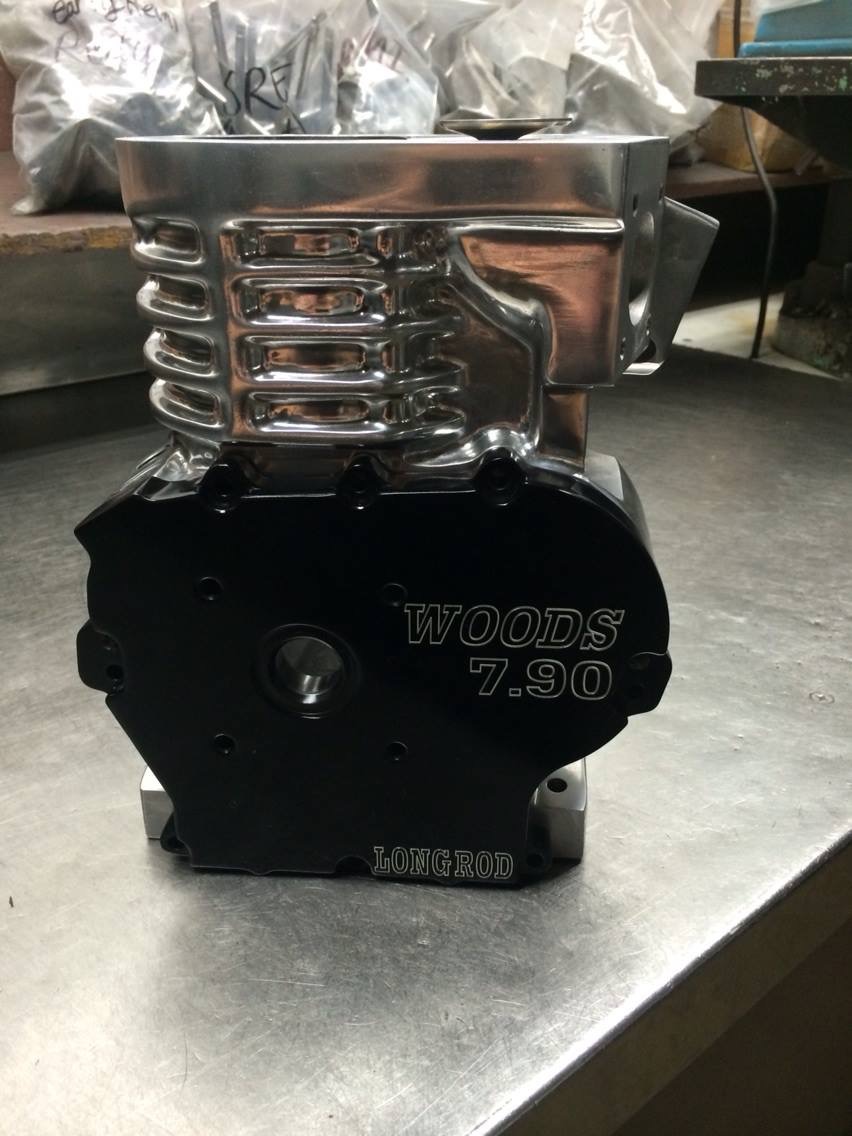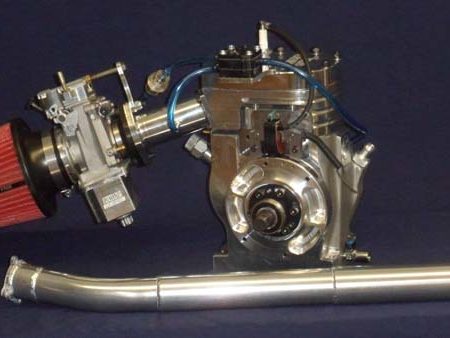Description
The Nic Woods 7.90 Long Rod Engine is one of the premier Jr. Dragster engines on the market. Con rods are part of the fundamental mechanism at the heart of almost every race engine in the world, and there is little to make me think that this is about to change. In dealing with the forces exerted on adjacent components by a con rod, we tend to split their mass into a reciprocating component, which we assume travels up and down with the piston, and a rotating component, which we assume travels around with the crankpin on which it operates.
As race engine engineers, we generally take great care to keep both piston assembly mass and crankshaft inertia to a minimum. Something that might seem a very attractive concept, therefore, is to shorten the con rod. Not only would we save mass in the con rod, but the block could be made shorter, reducing the mass of the block and lowering the height of the centre of gravity of the engine. Again, these are all generally laudable aims for a race engine.
However, we find that there are a number of reasons to maintain or increase con rod length. The first of these is the mitigation of secondary forces. These secondary forces act at twice engine speed and are proportional to the ratio of crank throw to rod length. We can see that decreasing this ratio will reduce secondary forces and, with a fixed crank throw, we would look to increase rod length to achieve this.
The second reason why short rods are not often used is the effect of rod angularity. The longer the con rod, the lower its angle to the cylinder axis for any angle of crankshaft rotation. The higher the r/l ratio, the greater the angle of the rod when maximum cylinder pressure occurs.
The effect of higher rod angularity is to increase the side load on the piston skirt. For a given coefficient of friction, a higher load means a higher drag on the piston and increased frictional losses. The interaction between the skirt, lubricant film and cylinder wall means the coefficient of friction cannot be assumed to remain constant, but the principle holds true that lower con rod angularity offers lower friction.
The “Woods 7.90” will deliver deadly consistency, along with long lasting performance.
All Nic Woods Engines Include:
This Engine is as good as it gets for 7.90 Racing. It features all the latest and greatest technolgy.
- Complete Build Sheet
- Dyno Sheet/Tuned
- Rings Seated On “Spintron”
- Coated Piston
- 4stage Header
- Billet Crankshaft, Connecting Rod, Camshaft, Head and Flywheel
- PVL Ignition (Blue Coil)
- 42mm“Choo Choo” Carburetor
- 3 Ring Piston
- Flow BenchTested
- Complete Engine Polished/ Optional
- Big Core Camshaft
- 1.400 5/16 lifters
- Manley Ti Valves
- .600 Lift Valve Springs
Expect 7.90 @ 500+ lbs
53hp @ 8400rpms




